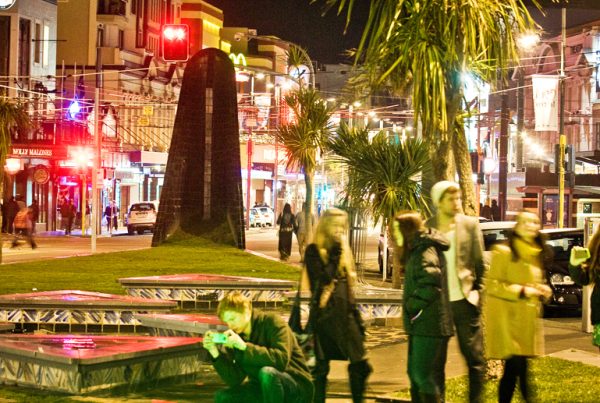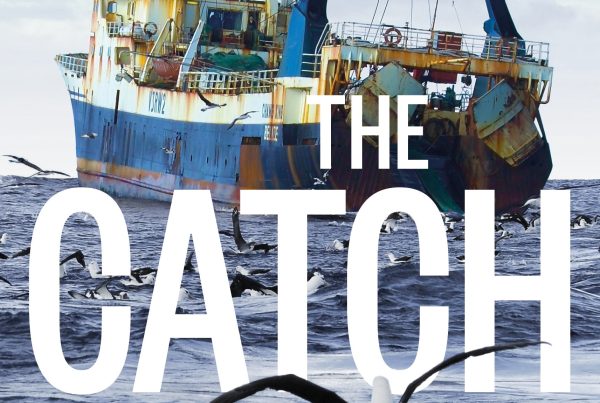
These intrepid journeyers are our freshwater fish, the kōkopu and the kōaro, beautiful little striped and gold-spotted swimmers whose juveniles we know as whitebait. No one is more dedicated to them than Frances Forsyth, consultant ecologist and MA student. She tracks them, counts them, studies their habits, thinks about ways to ease their path. They’re mostly nocturnal, so she goes out at night to find them, armed with headtorch and notebook, usually on Friday nights to minimise the disruption to her own life.
“It’s really exciting,” Forsyth says, beaming widely. Especially if she finds a specimen of a rare species, or fish in a stream where no one thought they existed. “You come home in the early hours, and you can’t get to sleep!” Recently, in a Porirua stream, she found a short-jawed kōkopu, a particularly endangered — and difficult to pin down — species. “We don’t find many of them, so we don’t know much about it. It’s got a cryptic lifestyle.”
But this much we do know: these are extraordinary swimmers. The fish start life in the streams around the city, but immediately head out down the stormwater drains and into the harbour for a few months. Then, in late winter and early spring, they return up the drains to whichever stream takes their fancy, and there they eat, breed and spend the rest of their lives, which can be 25 to 30 years long.
Like the eels that swim all the way to Tonga to breed, before returning home, these fish have “this driving urge” to get up to the streams, Forsyth says. They don’t always return to the stream in which they spawned, but they do sniff out where others of their species are and head towards them.
On this once-in-a-lifetime trip, they have to contend with all kinds of obstacles, like the salmon seen leaping up waterfalls in nature documentaries. Unlike the salmon, these fish aren’t leapers, but they do have exceptionally strong fins. “They riffle them like this,” Forsyth says, gesturing, “and they just climb.”
You can learn all sorts of things about Wellington thanks to these fish. The fact that the tide in the harbour runs up as far as the Cambridge hotel, for instance. Or that the city’s founding fathers built separate waste and stormwater drains. Or that a resident population of eels lives under the Basin Reserve, feeding on smaller fish and the odd lost moth.
Forsyth, a self-professed “fish geek”, knows how important her animals are in the ecosystem. “They are food for shags, food for sea fish… food for the eels.” As if life on the fish highway weren’t tough enough. “It’s the way with small things!”
She wants to herald forth the attractions of these small but perfectly formed fish. “I think they are really beautiful,” she says. “I want more pictures of them out there in the world.” She’s been leading a campaign to get them onto a series of postage stamps, sadly without success so far.
Still, things are looking up for the banded kōkopu, the kōaro and their close relatives. Many streams are less polluted than they once were; more developers are becoming aware of the fish; steps are being taken to overcome the obstacles they face. It’s an odd phrase, but ‘fish ladders’ are the latest thing: lines of rough rope up which these amazing climbers can pull themselves, if the gap from drain to drain is too great for them otherwise. And who could begrudge them the help?




